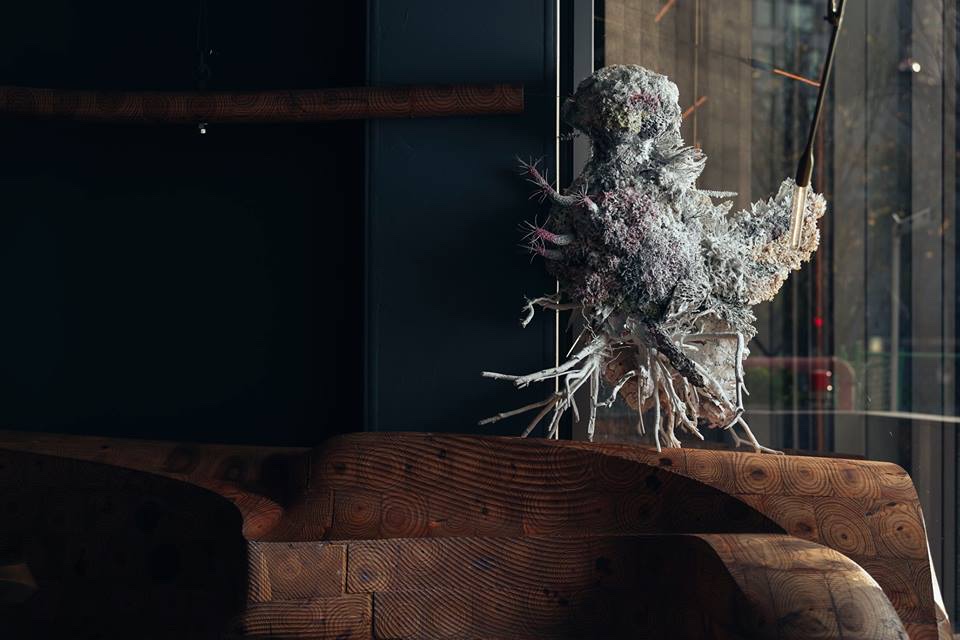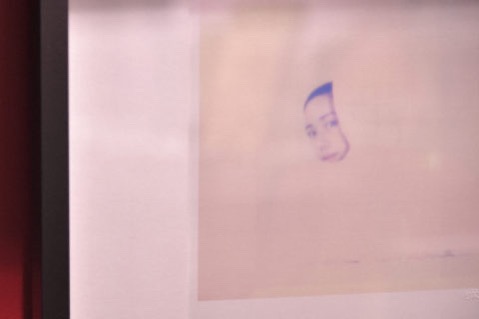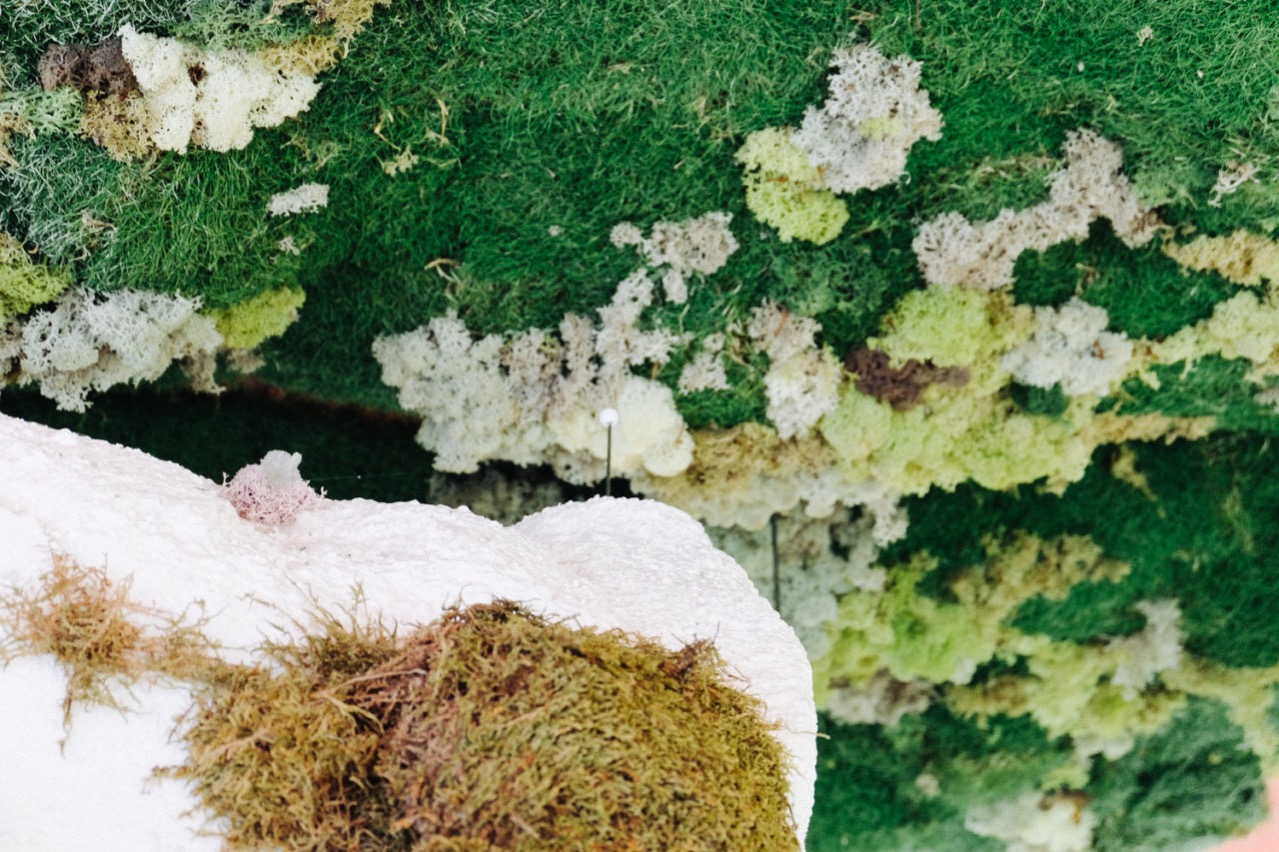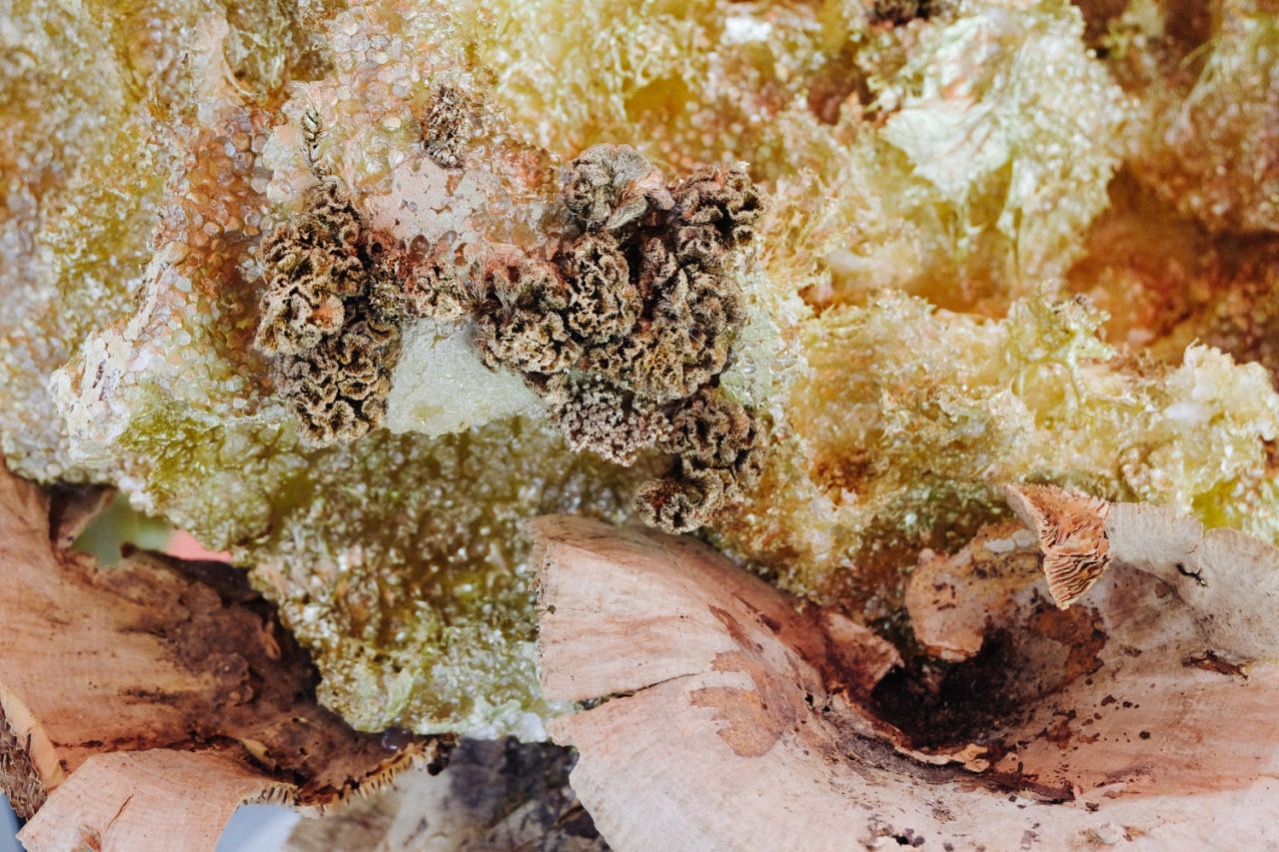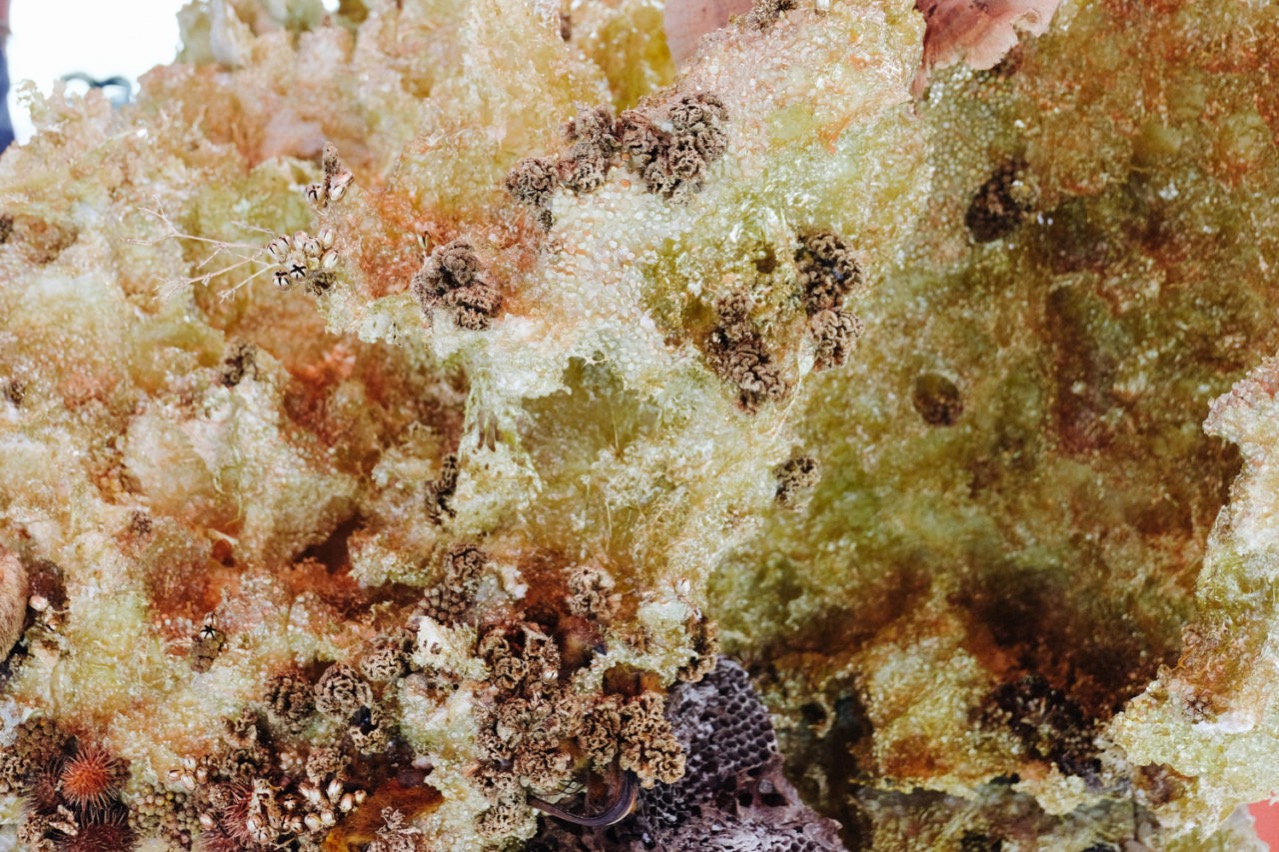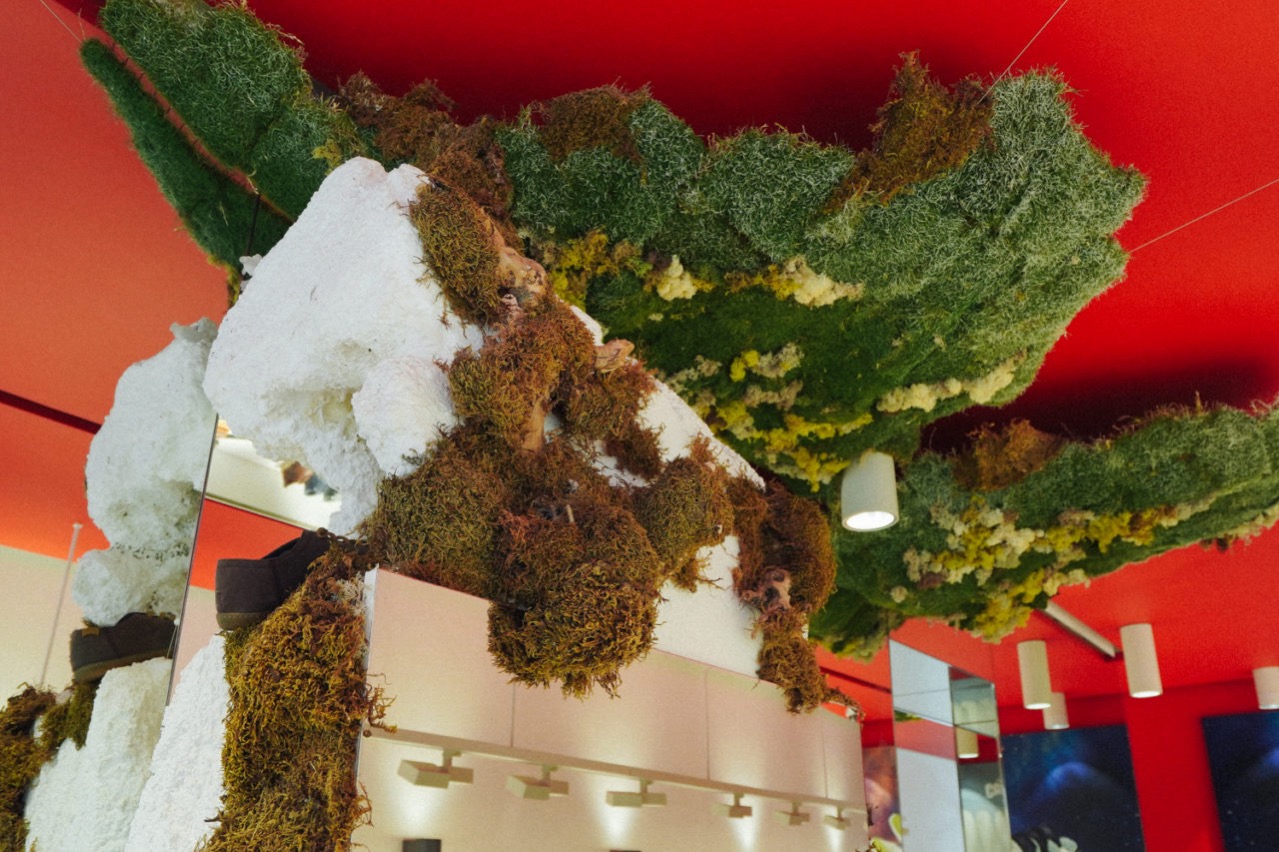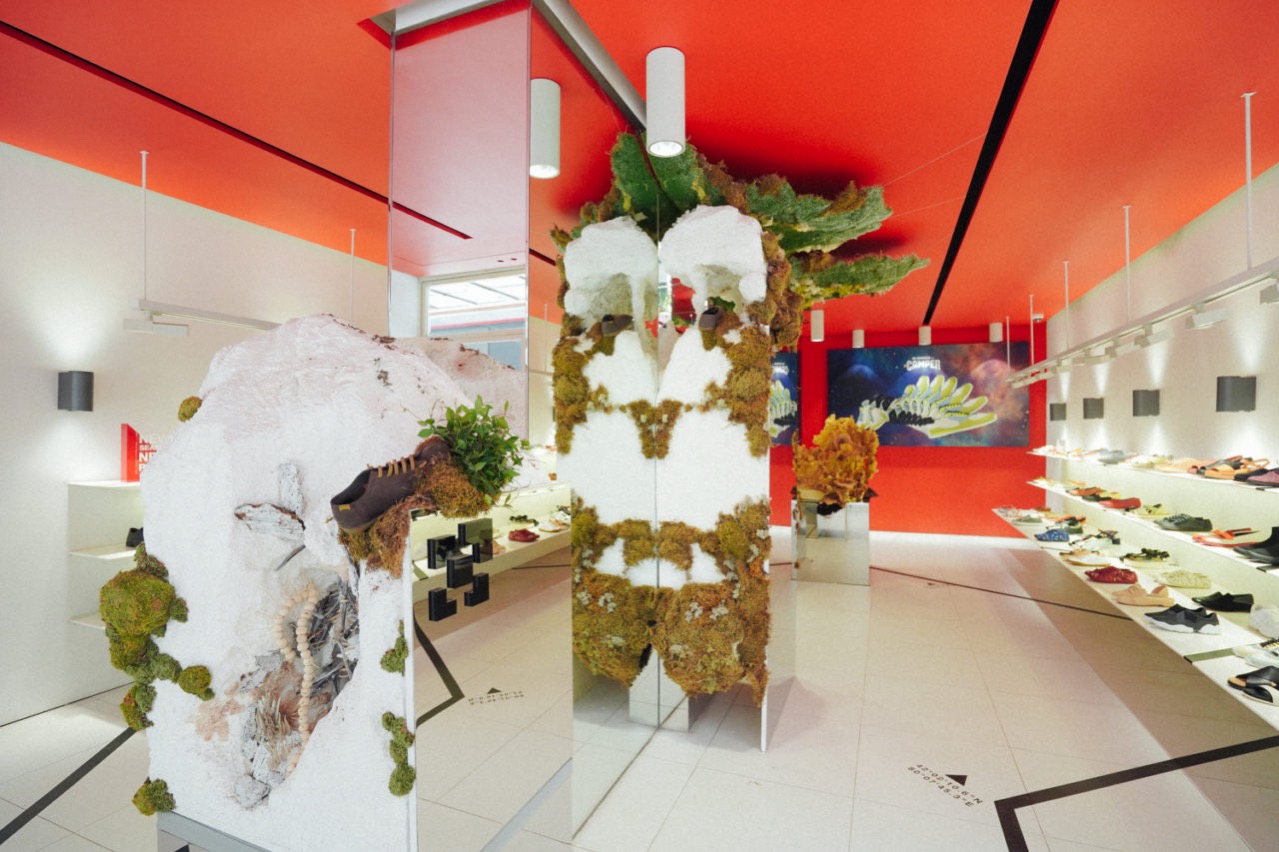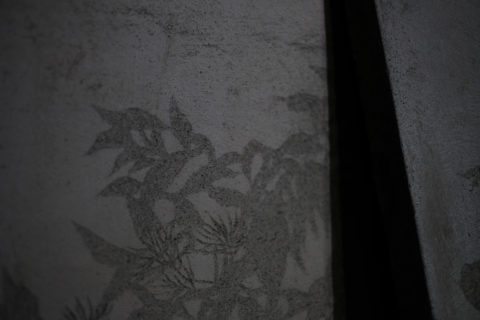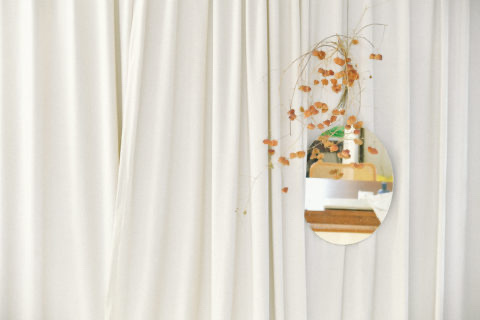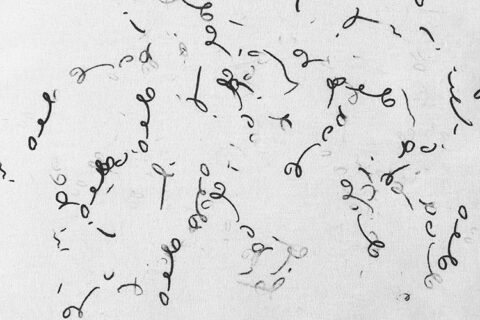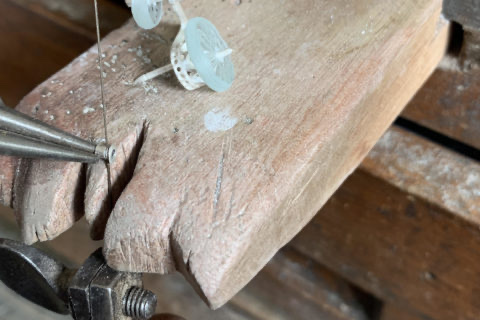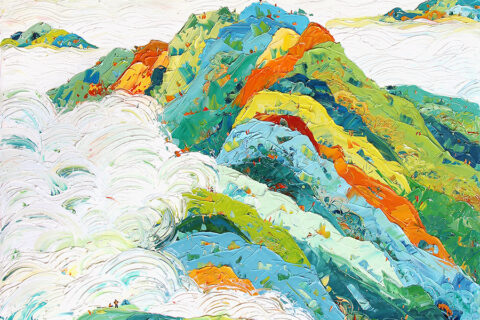生活在城市裡,我們與大自然的距離似遠還近。 城市中的人們,大都以點到點作為行走的目標,忘記了行走、生活的品質,尤其是生活空間狹小、節奏急促的城市。「我的作品是以植物和建築的形態混合而成。作品能深化人與植物的關係,把花草植物的形態融合於不同的空間之中,更成為了城市中的一個喘息的窗口,創造更大的想像空間。」台灣植物裝置藝術家李霽的作品時而複雜怪異,時而清新侘寂,變化多端,擁有難以言喻又獨特的美。
作為新的植物藝術,再不是冷冰冰的畫和雕塑,而是能走進生活之中,與空間和生活完整地接合。「這就像與CAMPER的合作,以「Walk Artistry」為主題的創作企劃,植物裝置把行走中感受大自然的經驗細膩地呈現出來。」李霽除了是植物裝置藝術家,也是一位極地跑手,曾由新疆的天山跑一百多公里到內蒙;生活的體驗都為作品增添了層次。「這次合作,我以台北、天山山脈和柬埔寨為主題,當中加入了抽屜的設計,好像是打開心裡的抽屜一樣,伸延的想像空間是不用靠實際的空間來放大。」李霽說,香港的生活空間很小,剛開始構思作品時,要考慮在香港製作或是台灣完成後才送過來;店內的展覽空間也不大,所以他用抽屜、把植物伸延至天花,來把想像的空間變大,這大概是他對香港的回應吧。
「新的植物藝術是利用空間來展示自然的力量。生活在台北這潮濕的城市,植物都依賴水來生長,也反映台北人曖昧不明的個性和做事隨性的態度。白茫茫的天山山脈上加入金屬、木板,是因為在遼闊空礦的環境中,仍可看到一些小屋或建設等的人文活動,這些都是自然景觀的一部分。最後,我從柬埔寨的黃土、宗教雕塑和建築中獲取靈感,啡金色得物料造成山的景象,把靈芝等中藥材融入成為細節,回應這地方建構出來的文化。」」李霽說每組裝置旁都有一部耳機,播放著山嶺的風聲蕭蕭或是城市中的吵鬧嘈雜的聲音,讓觀者更能投入地想像。
李霽說,要做好的作品,必先了解植物的背景,它的個性和情緒,才能把它們組合起來。他的作品亦不只限於自然材料,而是取決於使用者和空間。「每次創作時,我都會想作品會在怎樣的空間發生、會接觸到什麼人和該回應什麼的精神。或許我的植物裝置裡會有讓人感到不太正式的材料,如蜂巢、靈芝、便當盒和填充料等,某些植物也會經過染色或加工處理;我認為這些非常人為的事也是自然環境的一種。我希望觀者可以從不同角度去檢視作品,就如同一個環境,不同時間、位置、心情,所看的也不盡相同;由此發掘更多的可能性。」
去年開始,李霽為台北的餐廳RAW製作植物裝置,餐廳的主理人對食物非常執著,想從食物中表達台灣的個性。「在構思作品時,我需要做大量的資料搜集,如台灣的歷史和文化、餐廳的菜式和使用的材料等,把抽象的概念轉化成植物裝置。作品每三個月都會換上新的,對我來說是很有趣的經驗。」
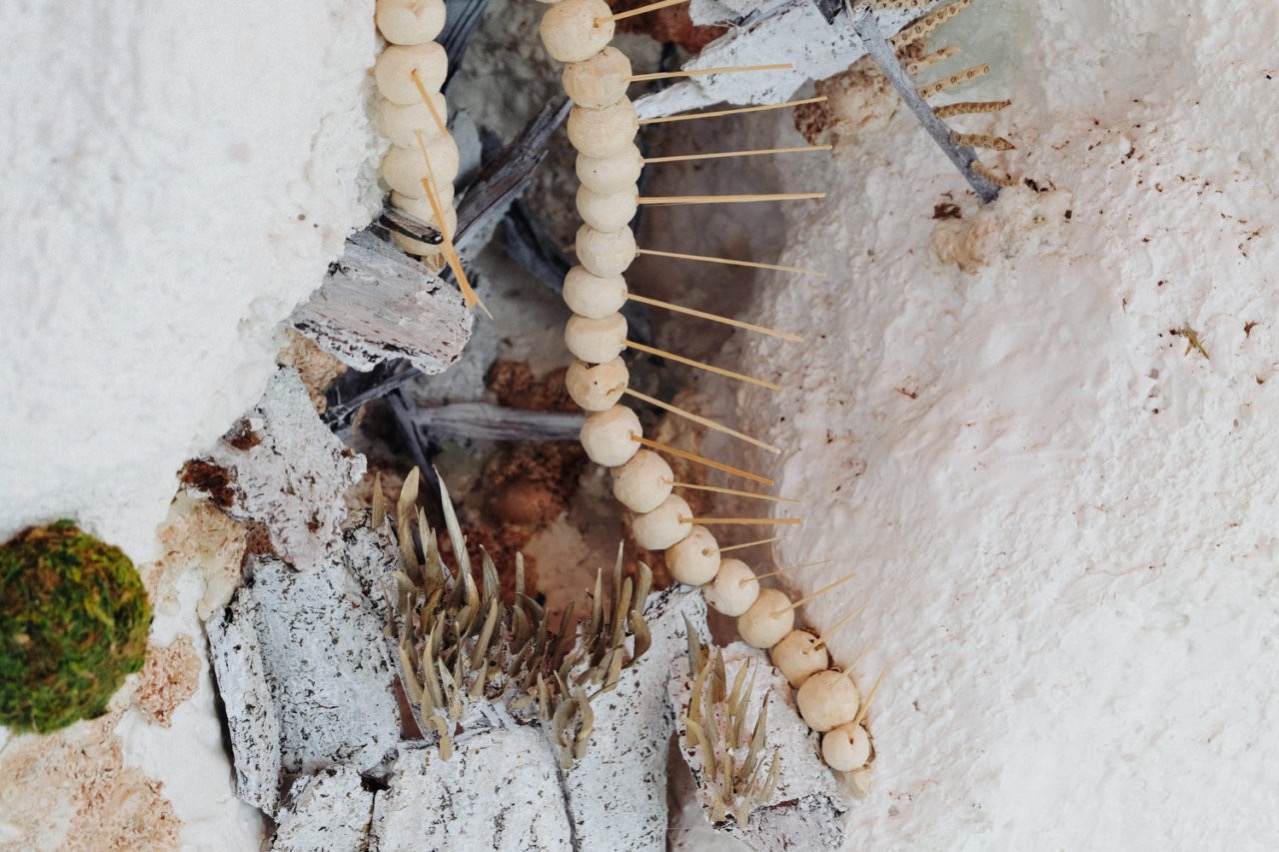
Living in the city, the distance between nature and us has become vague. People leading a city life go primarily from point-to-point, that makes them oblivious to the true essence of walking and life in a bigger context. It is especially noticeable in a confined space with a fast-paced lifestyle. “I blend together the forms of plants and architecture to create my artwork, which in turn helps to strengthen the relationship between humans and plants. Incorporating the structure of plants into various space can create a window in the cityscape where people can stop and relax. It is ultimately a realm where people can be imaginative.” Lee Chi, the botanical installation artist from Taiwan, is known for his compact and bizarre artworks. They exude a wabi-sabi (the Japanese aesthetics that celebrates transience and imperfection) vibe that is far from being boring but utterly possesses an unexplainable beauty.
Such new form of botanical art, different from the rather cold and distant painting or sculpture, is an art form that is eager to be part of the community and interact with space and people’s actual life. “The current collaboration with Camper titled Walk Artistry has meticulously reproduced the experience of taking a troll in nature through an exquisite botanical installation.” Lee is not only a botanical installation artist but also a runner in extreme environments. He once ran over 100 kilometers from Tengri Tagh in Xinjiang to inner Mongolia. His extraordinary adventures have easily become spices to his art. “This collaboration is themed around Taipei, Tengri Tagh and Cambodia. Drawers are also part of my inspiration, the work is like opening a drawer of one’s heart so that the room for imagination is not limited to actual physical space,” explained Lee. Space is extremely limited in Hong Kong, at the designing phase, he had to decide whether to build the work in Hong Kong or ship the finished work from Taiwan. Considering how small the exhibition space is, he extended the botanical installation, or the drawers of imagination as he called it, to the ceiling. Making use of every possible corner to project imagination is perhaps Lee’s response to Hong Kong.
“The new form of botanical art utilizes space to demonstrate the power of nature. Living in a humid city like Taipei, all types of plants rely on water to live; this can as well be associated with the undetermined and spontaneous personality as seen among people in Taipei. The whiteness of Tengri Tagh is ornamented with metal and wood board, this is because there are still human activities in the vast space that looks seemingly empty. The small huts and other structures are part of the natural landscape. The final touch of this work is inspired by the loess in Cambodia, as well as the sculpture and architecture that serve a religious purpose there. I used some golden brown materials to build the mountain, afterward, I added details like lingzhi mushroom and other Chinese herbal medicines to the artwork, so as to facilitate a dialogue with the culture spouted from the place,” Lee Chi continued to explain his artwork by saying each installation is paired with a headset that plays the sound of wind whooshing in the mountains or the noise as heard in a busy metropolis. With the sound, the audience can better immerse themselves into the realm that the illustrations are portraying.
Lee said, the first step to make a botanical installation is to thoroughly understand the plants; you have to know their demeanor well enough before you know how to put the plants together. Lee does not limit his work to all natural materials, the decision is based on to whom and in where will the work be shown. “I always take the physical environment of the exhibition space into consideration. I would also think about what kind of audience will it reach, and whether the work is a response to a certain topic or idea. Some may find my botanical installation unconventional as I use materials like beehives, lingzhi mushroom, lunchbox, packing material and so on. I would also use dyed or processed plants in my work. To me, artificial processes and items are also part of nature. I want my audience to view the work from multiple angles. You can always have a different experience depending on the hour of the day, your location, or simply your mood. There are a lot of possibilities waiting for us to explore.”
Starting from last year, Lee has been making botanical installations for a restaurant in Taipei called RAW. The restaurant owner has a strong passion for expressing the identity of Taiwan through food. “While working on my design, I would spend a lot of time on researching, so as to understand the history and culture of Taiwan, the dishes offered in the restaurant and the ingredients they use. Afterward, I would incorporate these abstract ideas into my botanical installation. The artwork stays temporarily in the restaurant for only three months before I replace it with a new one. This is an exciting experience for me.”
